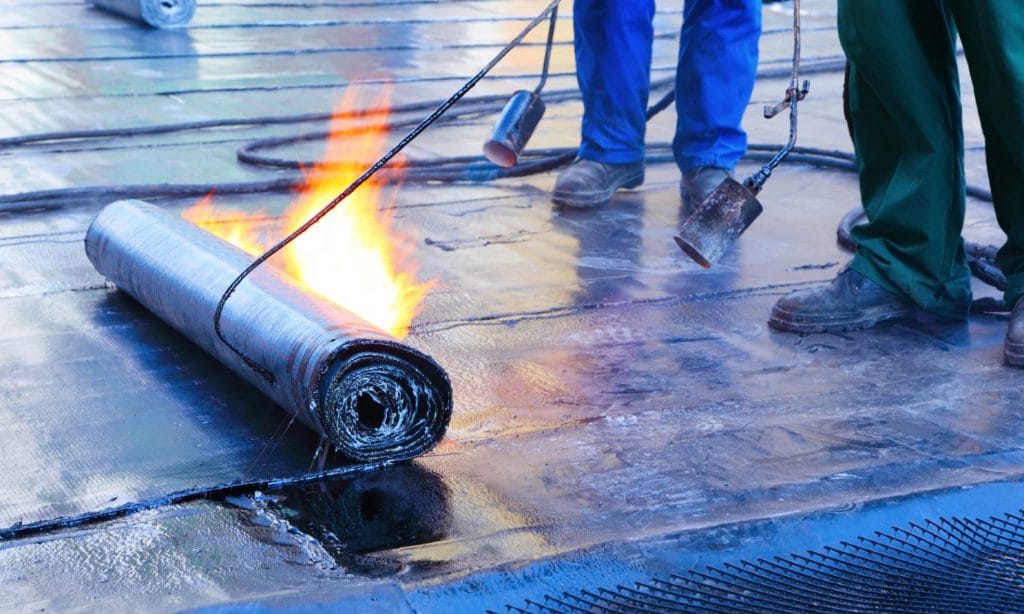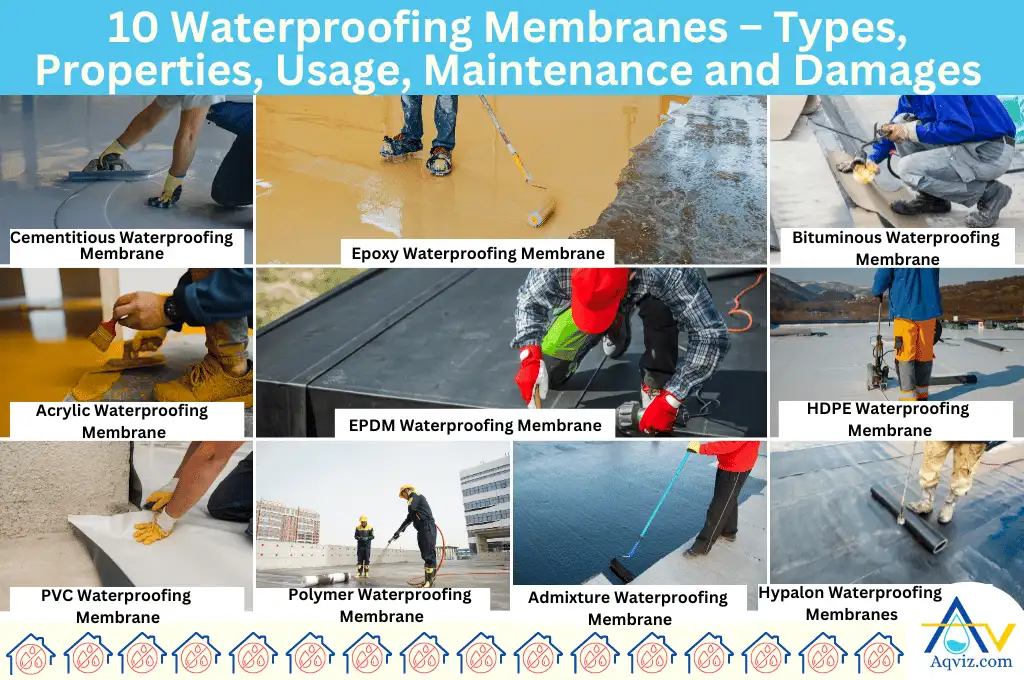The Role of Sump pump discharge drainage Omaha in Preventing Floods
Wiki Article
Just How Waterproofing Works: A Detailed Look at Techniques and Technologies
Waterproofing is essential for shielding structures from moisture-related damages. It involves various techniques and technologies that produce barriers against water intrusion. Conventional approaches, such as compressed clay, exist side-by-side with modern-day advancements like liquid-applied membranes. Understanding the subtleties of these strategies is essential for effective application. Nevertheless, the effectiveness of any waterproofing remedy hinges not only on the methods utilized but additionally on continuous maintenance and inspection. What are the key factors that influence lasting performance?Understanding the Fundamentals of Waterproofing
Waterproofing is an essential procedure that shields frameworks from water invasion, which can bring about considerable damages in time. This method entails the application of different materials and techniques developed to produce an obstacle against dampness. The key goal is to avoid water from passing through surfaces, which can cause wear and tear, mold growth, and architectural instability.Various aspects influence the selection of waterproofing approach, consisting of the sort of framework, its place, and ecological problems. Recognizing the physics of water activity and the buildings of various products is critical in selecting an efficient waterproofing solution.Effective waterproofing not only safeguards buildings however likewise enhances their longevity and stability. Usually, it is incorporated right into the style stage of building to assure extensive security. As understanding of water-related problems grows, the significance of recognizing waterproofing basics ends up being progressively clear to architects, contractors, and homeowner alike.Standard Waterproofing Techniques
Traditional waterproofing techniques have actually been used for centuries, depending on reliable techniques and materials to protect structures from water damage. One of the earliest techniques involves making use of clay, which, when compressed, creates an all-natural obstacle versus wetness. In addition, bitumen, a sticky, black product originated from oil, has actually been used for its waterproof residential properties, usually related to roofing systems and foundations.Another strategy includes the application of lime-based plasters, which supply a breathable layer that enables dampness to leave while preventing water access. Thatch roof covering, a traditional technique still seen in some cultures, provides superb waterproofing as a result of its firmly packed straw layers.Moreover, making use of stone and brick has projected, as these materials are naturally resistant to water when properly installed. On the whole, traditional waterproofing methods stress the value of choosing proper products and construction techniques to boost resilience versus water breach.Modern Waterproofing Technologies
Improvements in contemporary waterproofing innovations have actually reinvented the method structures are protected from water damage. Cutting-edge methods such as liquid-applied membrane layers and sophisticated sealers have actually improved the performance and flexibility of waterproofing options. These innovations permit seamless application, decreasing the danger of leakages and guaranteeing thorough coverage over complicated surfaces.Moreover, the assimilation of smart modern technologies, such as dampness sensors and automated monitoring systems, makes it possible for real-time evaluation of waterproofing efficiency. This proactive technique promotes timely maintenance and minimizes long-term repair service costs.Additionally, improvements in spray-applied coatings offer quick application and exceptional adhesion, adapting to numerous substratums while giving durable defense. Strategies like polymer-modified systems even more boost versatility and sturdiness, making them suitable for diverse settings. In general, modern-day waterproofing technologies not just alleviate water intrusion yet additionally contribute to the longevity and sustainability of structures, noting a considerable change in the sector.Products Utilized in Waterproofing
The performance of waterproofing solutions greatly relies upon the products utilized in their application. Different materials are used to create obstacles against water access, each with unique properties matched for various environments. Frequently made use of materials consist of membranes, layers, and sealants.Liquid-applied membranes, commonly made from polyurethane or acrylic, create a smooth obstacle that adapts to intricate surface areas. Sheet membrane layers, normally built from rubber or thermoplastic, offer toughness and are optimal for larger locations. In addition, cementitious waterproofing products, composed of cementitious compounds, give outstanding attachment and flexibility.Sealants made from silicone or polyurethane are vital for joints and seams, making sure thorough protection. Advanced products, such as geo-composite membranes, combine numerous functions, boosting performance. Generally, the choice of waterproofing materials is vital in accomplishing long-lasting and effective water resistance, tailored to specific project requirements and ecological problems.
Typical Applications of Waterproofing
Waterproofing plays a necessary role in various markets, making certain the durability and integrity of structures. Common applications consist of household solutions that protect homes, industrial framework that safeguards services, and industrial setups that call for robust protection versus moisture. Understanding these applications highlights the significance of waterproofing in preserving both safety and functionality across various environments.Residential Waterproofing Solutions
Lots of property owners deal with difficulties with moisture invasion, making effective domestic waterproofing options important. Different techniques exist to resolve this concern, including interior and exterior waterproofing systems. Interior remedies commonly entail the application of sealants and layers to cellar walls, which aid prevent water seepage. Exterior techniques commonly consist of the installment of drain systems and water-proof membranes that draw away water away from the foundation.Additionally, house owners may take into consideration sump pumps to remove water accumulation and dehumidifiers to control moisture degrees. Proper grading and making use of rain gutters also play a crucial role in handling water circulation around the home. By executing these approaches, property owners can considerably minimize the threat of water damage and mold growth, making certain a completely dry and safe living atmosphere.
Industrial Facilities Defense
Effective waterproofing remedies play a crucial role in the protection of commercial infrastructure. Landscape drainage Omaha. These strategies are important for securing structures, car parking structures, and bridges from water damages, which can endanger structural stability and result in costly repair services. Typical applications consist of the installation of membrane layers, layers, and sealants that produce barriers against visit the site moisture seepage. Areas such as cellars, roof coverings, and outside wall surfaces are often prioritized to guarantee longevity and sturdiness. Furthermore, waterproofing systems can enhance energy performance by stopping water-related concerns that may bring about mold and mildew growth and damage. By carrying out durable waterproofing steps, homeowner can secure their investments and preserve functional effectiveness, inevitably adding to the overall sustainability of business centersIndustrial Applications Review
While various fields encounter one-of-a-kind difficulties, the demand for trusted waterproofing services continues to be a constant in commercial applications. Industries such as production, building and construction, and power usually experience settings where moisture direct exposure can threaten architectural honesty and operational performance. In manufacturing facilities, waterproofing is vital for safeguarding machinery and materials from water damages. In building, it safeguards structures and basements versus groundwater seepage. The power industry relies upon waterproofing for the security of devices in hydroelectric plants and offshore frameworks. Furthermore, food processing industries use waterproofing to ensure health and conformity with security standards. Generally, efficient waterproofing options are necessary for boosting toughness, security, and productivity throughout different commercial setups.
Maintenance and Long Life of Waterproofing Solutions
Waterproofing remedies are created to offer lasting protection against wetness breach, waterproof concrete sealer normal upkeep is important to ensure their performance and durability. Routine evaluations play a considerable duty in identifying prospective problems such as cracks, peeling, or indications of water damages. Attending to these troubles promptly can stop additional damage and expensive repairs.Additionally, cleaning up the surface area of waterproofed locations assists remove dirt and particles that could jeopardize the stability of the waterproofing obstacle. It's also recommended to reapply protective layers or sealants as recommended by producers to maintain ideal efficiency. Environmental aspects, such as UV direct exposure and severe climate conditions, can impact the life expectancy of waterproofing materials, making routine analysis crucialOften Asked Questions
Can Waterproofing Be Applied in Winter?
The inquiry of using waterproofing in chilly weather elevates issues concerning attachment and curing. Numerous items may not do at their best in low temperature levels, necessitating mindful option and factor to consider of details standards for efficient application.How Much Time Does Waterproofing Generally Last?
The period of waterproofing effectiveness differs based upon products and ecological elements. Usually, it can last from 5 to ten years, but normal upkeep and inspections are vital to guarantee peak efficiency and longevity.Is DIY Waterproofing Effective and Safe?
The performance and safety and security of DIY waterproofing rely on different factors, including material high quality and application strategy. While some individuals achieve acceptable results, others might encounter issues that endanger long-term security and structural honesty.What Are the Signs of Failing Waterproofing?
Signs of falling short waterproofing consist of visible water stains, peeling paint, mold and mildew growth, stuffy odors, find more information and moisture in wall surfaces or ceilings - Drainage & waterproofing company Omaha. These indications suggest compromised obstacles, necessitating prompt assessment and potential remediation to stop further damagesHow Do I Select the Right Waterproofing Specialist?

Report this wiki page